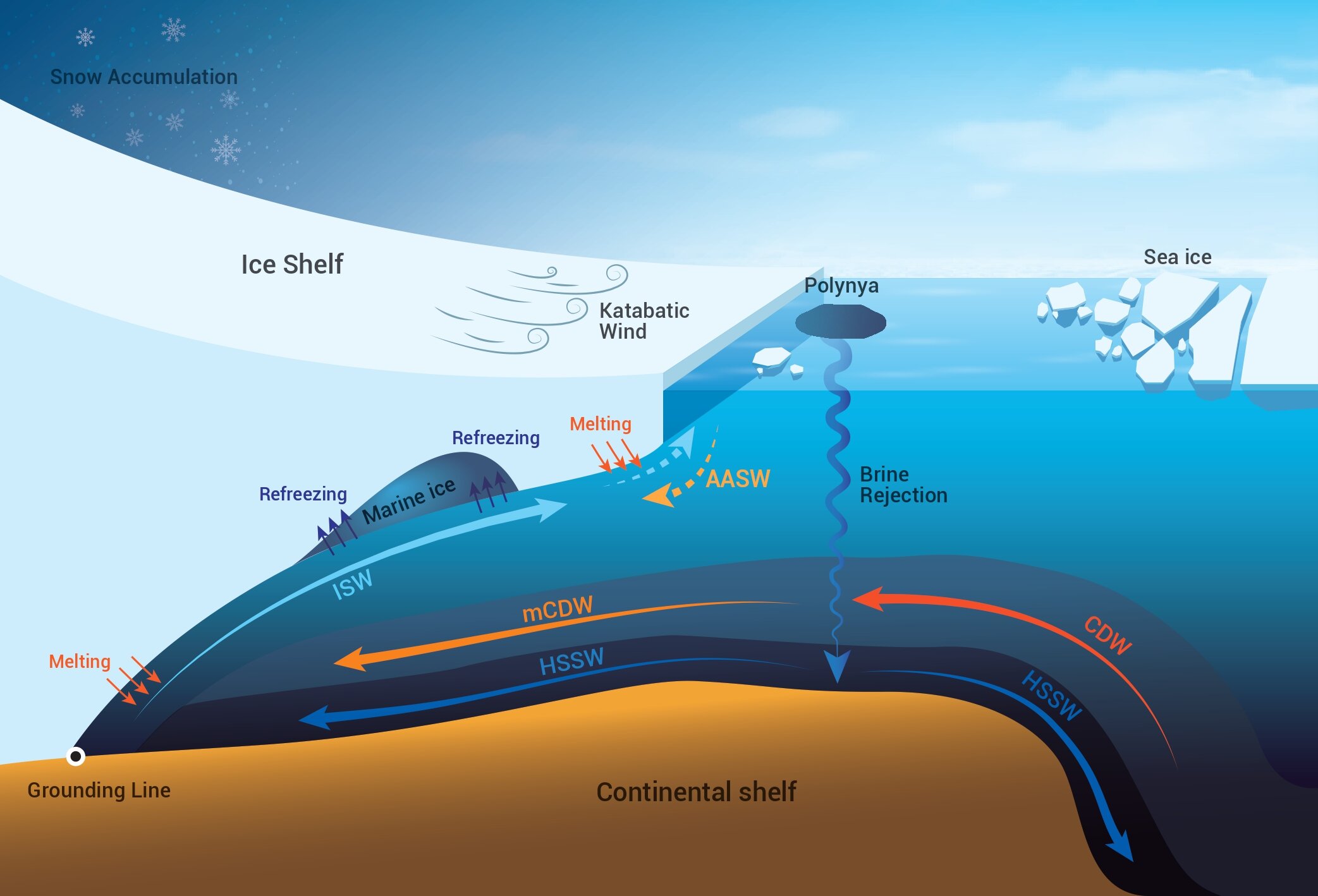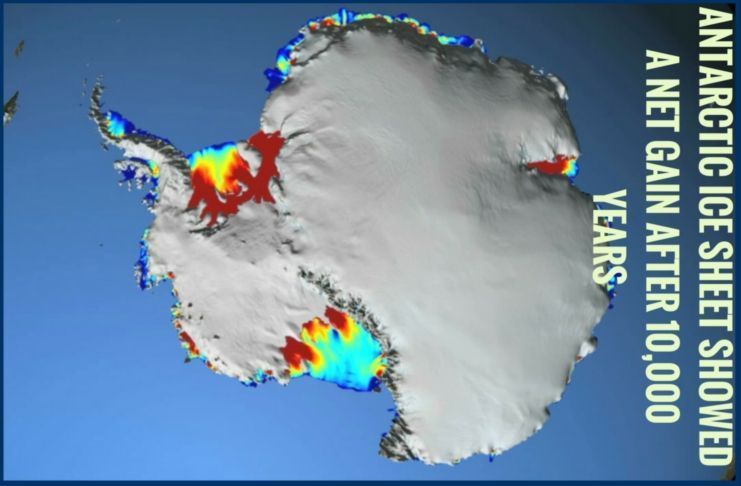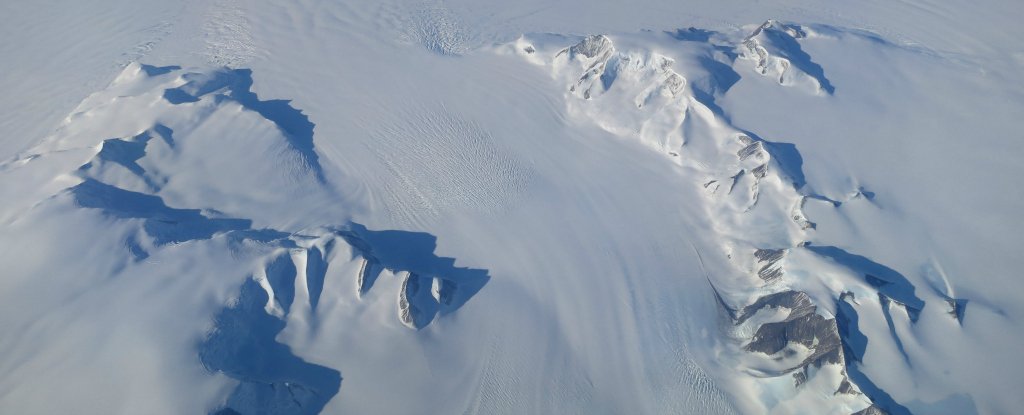
Trump’s Antarctic Paradox: Gaining Ice, Losing Influence?
Antarctica, a continent synonymous with pristine wilderness and critical climate science, has found itself at the unexpected intersection of fluctuating presidential priorities. While the imagery of a frozen continent might suggest stability, the reality on the ground, particularly concerning U.S. involvement, has become a complex puzzle. This article delves into the intriguing paradox: could policies associated with the Trump administration, while perhaps not physically “gaining ice,” have inadvertently led to a decline in American influence in a region of paramount global importance?
The Shifting Sands of Antarctic Policy
The United States has long been a cornerstone of Antarctic research and stewardship, a commitment cemented by its ratification of the Antarctic Treaty. This treaty, a landmark in international cooperation, designates the continent for peaceful purposes and scientific research, prohibiting military activity and mineral exploitation. However, shifts in political will can profoundly impact the resources allocated to these endeavors.
During recent administrations, concerns have been raised about potential funding cuts and a reduced emphasis on scientific programs in Antarctica. These shifts, driven by differing national priorities, have sparked debate among scientists and policymakers alike.
Budgetary Ripples: The National Science Foundation’s Role
A significant artery for U.S. scientific activity in Antarctica is the National Science Foundation (NSF), specifically its Office of Polar Programs. Reports and expert opinions suggest that budgetary adjustments and potential staffing changes within the NSF have had tangible effects on the continuity and scope of American-led research.
- Funding Cuts: Allegations of deep funding cuts to Antarctic science and logistics under specific administrations have led to a reassessment of U.S. operational capacity.
- Staffing Reductions: A notable outflow of personnel from the NSF’s Office of Polar Programs has been observed, raising questions about institutional knowledge and long-term planning.
These financial and personnel shifts, while often framed as budgetary recalibrations, can have profound implications for the very foundation of U.S. presence and leadership in Antarctica.
The Scientific Frontlines: What’s at Stake?
Antarctica is not merely a remote icy expanse; it is a vital barometer for global climate change. The continent’s ice sheets hold clues to past climates and projections for future sea-level rise, impacting coastal communities worldwide. Critical research focuses on:
- Ice Sheet Dynamics: Understanding how quickly Antarctica’s ice sheets are melting and contributing to rising sea levels is paramount. Scientists are particularly concerned about the stability of both the West Antarctic and East Antarctic ice sheets.
- Climate Modeling: Data gathered from Antarctic research directly informs global climate models, helping us predict the trajectory of climate change and its consequences.
- Ecosystem Health: Studying Antarctic ecosystems, including the delicate krill populations, provides insights into the broader health of the global marine environment.
The potential reduction in U.S. scientific output, directly linked to resource allocation, could mean missing crucial data points in this ongoing global scientific endeavor. This isn’t just about abstract scientific discovery; it’s about tangible impacts on our planet and our future.
The Influence Equation: Beyond the Ice
When we speak of “losing influence” in Antarctica, it extends beyond the physical presence of research stations. It encompasses diplomatic leverage, scientific leadership, and the ability to shape international policy regarding the continent.
- Diplomatic Footprint: The U.S. has historically played a leading role in the Antarctic Treaty System. Reduced investment in science and logistics could diminish its voice in crucial diplomatic discussions.
- Scientific Leadership: As other nations increase their Antarctic research budgets and capabilities, a perceived retrenchment by the U.S. could cede its traditional role as a scientific frontrunner.
- International Cooperation: Antarctica thrives on international collaboration. If the U.S. scales back its contributions, it could inadvertently foster a landscape where other nations, with different priorities, become more dominant.
The perception of American commitment, whether through robust funding or active scientific engagement, directly correlates with its influence on the continent.
The Paradox Unpacked: A Closer Look
The term “Trump’s Antarctic Paradox” emerges from a potential disconnect. On one hand, pronouncements regarding ice caps setting records, which often baffled climate scientists who observe melting trends, might suggest a dismissal of the urgency surrounding climate change. On the other hand, the very actions that might stem from such a viewpoint – such as budget cuts to climate research – could paradoxically lead to a diminished ability to influence the continent’s future and our understanding of its climate.
Consider this: if a nation prioritizes other areas and cuts funding for its Antarctic programs, it might appear to be “gaining ice” in the sense of not actively interfering with its natural processes (a flawed perspective, as inaction still has consequences). However, in doing so, it risks losing its sway in how Antarctica is managed, researched, and protected on the global stage.
A Comparative Glance:
| Nation | Antarctic Research Focus | Potential U.S. Impact (Hypothetical) |
|---|---|---|
| USA | Climate science, ice dynamics, atmospheric research | Reduced data collection, potential decline in scientific output |
| China | Growing research presence, ice core analysis, geology | Increased scientific leadership, greater influence on treaty discussions |
| EU Nations | Climate, oceanography, biodiversity, environmental monitoring | Continued robust contributions, potentially filling any U.S. vacuum |
This table, while illustrative, highlights how a shift in one nation’s commitment can create opportunities for others, altering the global scientific and diplomatic landscape.
Conclusion: Charting a Course Forward
The situation in Antarctica presents a complex challenge, forcing us to consider the long-term implications of short-term policy decisions. The scientific endeavors undertaken on this remote continent are not merely academic pursuits; they are critical for understanding and addressing some of the most pressing issues facing our planet.
For those who value scientific integrity and global cooperation, the key takeaways are clear:
- Prioritize Science: Robust funding and sustained commitment to Antarctic research are vital for accurate climate predictions and informed policy-making.
- Maintain Diplomatic Engagement: The U.S. must remain an active and influential voice in the Antarctic Treaty System to ensure the continent’s peaceful and scientific future.
- Foster International Collaboration: Working with international partners strengthens our collective ability to understand and protect this unique environment.
Ultimately, the question of whether policies associated with “Trump’s Antarctic Paradox” led to “gaining ice” or “losing influence” hinges on how we define success. If success is measured by a reduced footprint and less involvement, then perhaps there’s an argument to be made. However, if success is measured by leadership in scientific discovery, environmental stewardship, and global diplomatic influence, then the impact on American presence in Antarctica warrants careful consideration and a renewed commitment. The fate of this vital continent, and our understanding of it, depends on it.

Additional Information
The Antarctic Paradox Under Trump: Gaining Ice, Losing Influence?
The notion of Donald Trump’s presidency interacting with Antarctica presents a complex and, for many scientists, concerning paradox. While public discourse often focuses on his pronouncements about climate change and the melting of ice caps, the reality on the ground in Antarctica, as suggested by recent analyses, points to a potential divergence: while certain areas might be experiencing localized ice gain (a phenomenon requiring careful scientific interpretation), the United States’ scientific and political influence on the continent appears to be on a concerning decline.
The “Gaining Ice” Narrative: A Nuanced Scientific Picture
President Trump himself has historically expressed skepticism about the extent and causes of global warming, at times suggesting that ice caps are “setting records” – a view that has consistently baffled climate scientists. This stance, while seemingly at odds with the overwhelming scientific consensus on Antarctic ice melt, might be rooted in specific, localized observations that are often misrepresented or oversimplified in broader discussions.
Antarctica is a continent of immense scale and diverse climatic conditions. While the West Antarctic Ice Sheet is indeed demonstrably vulnerable to warming oceans, with its glaciers showing alarming signs of instability and potential collapse (as highlighted by research on East Antarctica’s largest glacier), other regions, particularly parts of East Antarctica, have shown periods of relative stability or even slight ice accumulation. This accumulation is often attributed to increased snowfall, which can, in the short term, offset melting, especially in colder, inland areas.
However, it is crucial to understand that these localized gains do not negate the overall trend of Antarctic ice loss, particularly when considering the continent’s ice mass balance as a whole. The warming oceans are a significant driver of ice shelf thinning and destabilization, which can lead to faster glacial flow into the sea, even if snowfall in some areas temporarily masks this effect. Trump’s framing of “gaining ice” likely focuses on these specific, less concerning regional trends, while ignoring the larger, more alarming picture of overall ice mass depletion and its implications for global sea-level rise.
Losing Influence: The Impact of Funding Cuts and Shifting Priorities
The more significant and verifiable impact of the Trump administration on Antarctica lies in the erosion of the United States’ leadership and influence. Several recent analyses point to a direct correlation between his administration’s policies and a weakening of the US presence and scientific endeavors on the icy continent.
-
Drastic Funding Cuts: President Trump initiated “massive government cuts” to US science and logistics in Antarctica. This included significant reductions in funding for the National Science Foundation (NSF), the primary body responsible for managing US Antarctic research. This has led to a palpable impact, with “a number of people have left the NSF’s Office of Polar Programs,” as noted by the Polar Journal. These cuts directly threaten the nation’s ability to maintain its vital scientific infrastructure and conduct groundbreaking research.
-
Threatening US Leadership: Scientists who work in Antarctica have expressed grave concerns that these cuts are “threatening the nation’s leadership at the ends of the Earth.” The Atlantic’s reporting suggests that the “Golden Age of Antarctic Science May Be Ending” due to these reductions, hindering urgent efforts to understand how quickly Antarctica’s ice sheets will crumble and contribute to rising sea levels.
-
Erosion of Scientific Capacity: The impact extends beyond mere funding. The cuts can lead to a loss of expertise, a reduction in research projects, and a diminished capacity to respond to emerging scientific challenges. This can force the US “off the icy continent” in terms of its scientific prominence, as the Conversation has warned.
-
Diminished Diplomatic Clout: Antarctica is governed by the Antarctic Treaty System, a framework that relies on consensus and cooperation among member nations. A perceived withdrawal or reduction in commitment from a major player like the United States can weaken the overall effectiveness of this system. Analysts, including former officials, believe that US influence under Trump could be a “slow-burning disaster” for imperiled Antarctica, potentially impacting crucial areas like krill management and environmental protection. This diminished influence can leave a vacuum that other nations might seek to fill, potentially altering the geopolitical landscape of the continent.
The Interconnectedness of Ice and Influence
The “Antarctic Paradox” highlights a critical juncture. While the physical reality of Antarctic ice is a complex and ongoing scientific endeavor, the political and financial decisions made by nations have a profound impact on our ability to understand and respond to the changes occurring there. The Trump administration’s approach, characterized by skepticism towards climate science and significant budget cuts, has inadvertently undermined the very capabilities needed to study and address the most critical aspects of Antarctic change.
In essence, while the scientific debate continues regarding localized ice gains in specific Antarctic regions, the undeniable trend is one of increasing scientific challenges and diminishing US influence. This creates a perilous scenario where the world’s scientific community, and particularly those reliant on US research capabilities, are less equipped to monitor, understand, and ultimately mitigate the far-reaching consequences of a warming planet, with Antarctica playing a pivotal role in that global equation. The future of Antarctic science, and by extension, the world’s understanding of climate change, appears to hang in the balance, heavily influenced by the policy decisions made far from the icy shores.






Leave a Reply